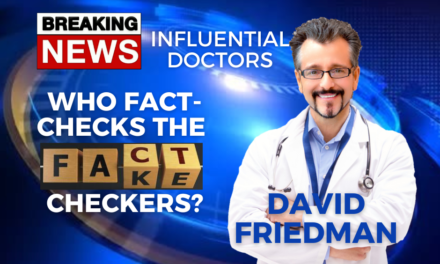I believe the popular statement “You are what you eat” should be changed to “You age how you eat.” It’s well documented how dietary choices can help in the prevention of conditions like obesity, arthritis, heart disease, type 2 diabetes, and even cancer. While it’s not always possible to see the negative effects taking place inside the body, your exterior appearance can be a great indicator if you need to alter your diet.
Oxidative stress caused by free radicals can damage the DNA and cells of your skin. This contributes to prematurely aging skin due to the destruction of collagen and elastin. Eating foods that are rich in antioxidants can help to neutralize the ravaging effects of oxidative stress. The good news is the epidermis, or surface layer of the skin, is renewed every twenty days. When these cells of your skin die and get replaced by nourishing healthful food, your appearance can drastically improve. Even if your diet has been aging you, you get a do-over!
Below are some telltale signs of how your diet may be affecting your appearance and accelerating the aging process:
SAGGING SKIN
If the reflection in the mirror isn’t revealing healthy, glowing skin, this is a good indicator that your collagen and elastin levels are being compromised. You should cut back on simple carbohydrates like white pasta, white bread, baked goods, and popcorn. These foods are quickly converted to glucose in the body which can be inflammatory and destructive to the layers of your skin, making it lose its elasticity and firmness.
Excessive, chronic alcohol consumption can also cause sagging skin. Alcohol dehydrates the skin, depriving it of the moisture and nutrients needed to keep your complexion looking radiant, firm, and youthful. In addition, alcohol can adversely affect your vitamin A levels. This is a very important antioxidant for your skin/body and it is vital in the regeneration of new cells. Always drink in moderation. The more alcohol you consume, the faster the sands of time will fall.
PREMATURE WRINKLES
This can be a sign that you are eating too much sugar, refined grains, or processed foods. These things can encourage the degradation of epidermis layers and cause a loss of firmness, elasticity, and an onslaught of premature wrinkles. Also, overdoing caffeine can accelerate wrinkle formation. While that morning Joe may give you more energy to jump-start your day, it is also a diuretic that can dehydrate the skin during the day. Skin that lacks adequate hydration doesn’t retain the plump, luminous look of young, healthy skin. This dehydration process can also exaggerate fine lines and wrinkles, making you look older. But don’t despair! You can enjoy the energizing benefits of coffee without the effects of dehydration simply by drinking plenty of water between cups of coffee throughout the day. Also, avoid adding cream and sugar to your coffee, as both dairy and sugar have adverse effects on your skin as well.
EYE PUFFINESS AND DARK CIRCLES
This can be a sign that you are eating too much processed salt or not drinking enough water. Canned foods have a lot of added sodium which can also lead to puffiness and dark circles below the eyes. Before eating or cooking food items in a can, rinse them thoroughly to remove excess sodium. Tomatoes and eggplant consumption can also be the culprit for puffiness under the eyes. They contain an alkaloid called solanine, which is known to cause an inflammatory response prevalent under the eyes. Try adding parsley or dandelion tea to your daily regimen. Both can help the kidneys flush out excess fluids from the body, especially under the eyes.
When it comes to staying hydrated, the rule of thumb is to drink half your body weight in ounces per day. So, if you weigh 150 pounds, you should consume 75 ounces of water each day.
DARK AGE SPOTS
Dark spots could be from too much sugar consumption. The reason our skin develops brown pigments is similar to why an unpeeled banana turns brown. That banana’s high fructose content (sugar) is reacting to oxidation and cross-linking which results in brown pigmentation. When we consume sugar, this same thing can happen to us. The fructose in sugar can create a “browning” reaction of our epidermis. Skin is composed of collagen and elastin, which makes our skin supple and soft. Sugar causes collagen cross-linking which results in accelerated aging of the skin. The more sugar we consume, the more prone we are to developing dark spots on our skin.
Another reason sugar is so ravaging to the skin is it shortens our telomere length (the strand at the end of our DNA.) Every time our DNA duplicates, our telomeres shorten. While our bodies normally replace those telomeres, sugar quickens that shortening, and thereby, advances the aging process. Cut back on those sweet indulgent foods.
LINES BETWEEN EYEBROWS (“ELEVENS”)
The space between the eyebrows can wrinkle, which is often referred to as “elevens.” This area corresponds with the liver, which plays a profound role in detoxification. Cut back on your alcohol consumption. Each time your liver filters alcohol, some of your liver cells die. The good news is the liver can develop new cells; however, prolonged alcohol misuse (drinking too much) can reduce its ability to regenerate. One alcohol, in particular, to avoid if you want to reduce those “elevens” is tequila made from agave. Agave syrup comes from the agave plant, a succulent that is native to dry regions in Mexico. It is extremely high in fructose (up to 97%!) Agave can contain more fructose than high fructose corn syrup, another major ager when it comes to collagen destruction. Some studies suggest that agave syrup is ten times more inflammatory than high fructose corn syrup (HFCS.)
In addition, per fluorinated chemicals found in your city’s water supply and plastic water bottles can create liver toxicity and lead to lines between the eyebrows. Be sure and use a high-quality reverse osmosis water filter at home for drinking and cooking. For more information, I highly recommend listening to my podcast: “What’s In Your Water?”
RED CHEEKS
Red cheeks may be a sign of stomach inflammation. Breakouts can be linked to allergies. One of the most common allergies affecting humans is dairy. Milk does a body bad! Research published by the Journal of Clinical Aesthetics and Dermatology found milk consumption causes inflammation and redness of the skin. Cow’s milk elevates insulin levels, and most brands contain growth hormones. Elevated insulin increases circulating cortisol levels that bind to the skin’s sebaceous glands, increasing sebum production. In addition, cow’s milk contains a sugar called lactose. Seventy-five percent of the world’s population is lactose intolerant, meaning they have an inability to digest the sugar in cow’s milk. This can lead to digestive issues like bloating, gas, constipation, and diarrhea, as well as sinusitis and skin redness including rosacea.
Substitute cow’s milk with almond, cashew, or hemp milk and you may see the complexion of your cheeks improve.
ACNE OR OILY SKIN
If your skin is oily and prone to acne, you should eliminate dairy, for the reasons stated above. Also, avoid fried and greasy foods. These can spike your blood sugar, leading to excess oil production and clogged pores. In addition, avoid unhealthy vegetable oils. In a Western diet, the ratio of omega-6 to omega-3 fatty acids in the diet is much higher than in non-Western diets (10 to 20:1 versus 2 to 3:1). Omega-6 fatty acids can be involved in pro-inflammatory processes in the body and are associated with the development of inflammatory acne.
Avoid inflammatory oils made from corn, canola, cottonseed, soy, safflower, and grapeseed. These can cause skin inflammation over time. Instead, go with healthier options such as olive, avocado, coconut, and flaxseed oil. In addition, oily skin can also be an indication that you may have gluten sensitivity. Try cutting back on gluten-containing grains and see if your skin clears up.
Next time, before you go grocery shopping, look into the mirror and let your appearance dictate the foods you purchase and the ones you leave out of the shopping cart. ~Dr. David Friedman

Dr. David Friedman
Dr. David Friedman is the international award-winning, #1 best-selling author of Food Sanity, How to Eat in a World of Fads and Fiction. He’s a Doctor of Naturopathy, Clinical Nutritionist, Chiropractic Neurologist, Board Certified Alternative Medical Practitioner, and Board Certified in Integrative Medicine. As Lifetime television’s morning show health expert and syndicated radio host, he’s shared his cutting-edge health features to millions of people every week. Dr. Friedman has been featured on ABC, CBS, NBC, E!, Discovery Health, FOX news, FitTV, The Food Network, Discovery Channel and more. He’s a contributing writer for U.S News & World Report, Newsweek, Better Nutrition, Readers Digest, and Woman’s World, just to name a few. Friedman’s list of clients has included many top celebrities like John Travolta, Jenny McCarthy, Jamie Lee Curtis, Val Kilmer, and Paul Newman. Dr. Friedman hosts the syndicated program To Your Good Health Radio, which has changed the face of talk radio by incorporating entertainment, shock value and solutions to everyday health and wellness issues. For more information go to:
* ToYourGoodHealthRadio.com
Click Here to Buy or View the Print Version of the Magazine




